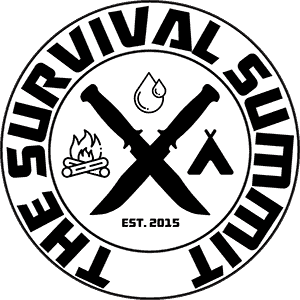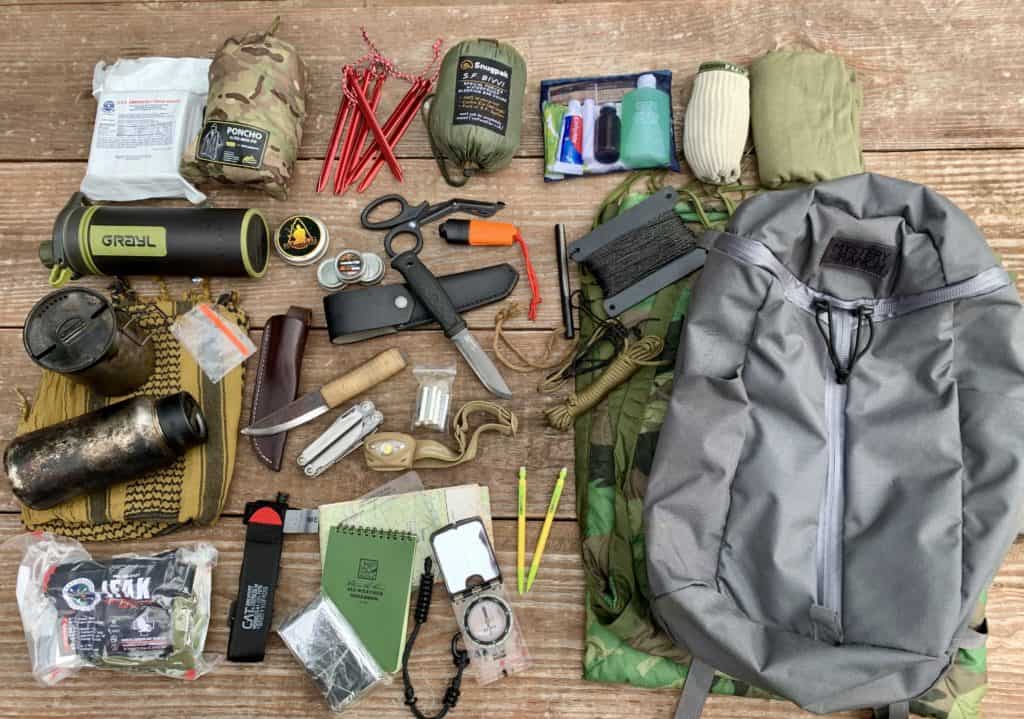Bug in vs. SHTF Bug Out

Bug in vs. SHTF Bug Out (updated 2023)
- “Bug Out” depending on the exact situation, should be part of everyone’s P.A.C.E. Plan, but it is ALWAYS situationally dependent.
- Many things could drive you from your home. Example: if the entire US grid went down after a high altitude EMP or very large solar flare, and you live in a big city, you are going to want to get out quickly.
- “Bugging out” does not mean you are going off to live off the land in the woods. It could simply mean your bugging out to your alternate, pre-planned secondary location.
- A “Bugout Bag” is a bag that contains all the supplies and tools you need to survive in an emergency. It should cover all of your basic needs.
- Bugout Bags are essential for families to have in case of an emergency.
- Bugout Bags should be packed with supplies and tools that will help you travel fast and light in an emergency situation.
- A “Bug Out” bag is necessary to get home from school, work, or otherwise, even if your plan is to Bug In at home.
- Your firearms, such as your pistol and magazines, are part of E.D.C. (Everyday Carry), not part of your Bug Out Bag.
- Bug in vs. SHTF Bug Out will always be situationally dependent and determined by your P.A.C.E. plan
- “SHTF” is simply when the “Sh*t Hits the Fan”
When to stay or go
As we’ve seen in recent years, emergencies can strike anytime and anywhere. And when they do, it’s important to be prepared. That means having a plan for either bugging in or bugging out, depending on the situation. Bugging in may normally be your Primary strategy for most events, but there are lots of things that could drive you from your home, such as natural disasters, rioting, looting, as well as war. So what factors should you consider when deciding whether to bug in or bug out?
If you’re in an active war zone, evacuating your family to a safer location may be necessary. Or, if natural disasters, such as fire or flooding, or rioting are threatening your area, bugging out may be the best option to ensure your safety. Wherever you end up, you’ll essentially still be “Bugging in” once you get there, so you need to be prepared for that. If you live in a big city, staying could be very dangerous if there was a large-scale event, such as a total grid down scenario, and you may have no choice but to leave. If you’re already living in a rural area, you may stay put. There really is no one-size-fits-all approach unfortunately.
Your home is your castle, but your home should not be where you store all of your gear and hope for the best. P.A.C.E. Planning is KEY. Always keep extra food and gear stored at your alternate, contingency and emergency locations, as well as caches for times when you may have no choice but to travel on foot, or by other means.
No matter what the situation, it’s important to be prepared. So make sure you have a bugout bag packed and ready to go in case of Emergency! If you’re headed home, depending on the situation, you never know how long it may take you to get home. If you end up stranded by a natural disaster such as a flood or fire that destroys your home, you don’t know how long it might be before you are rescued, so always have that “Bug Out” bad ready to go.
Please read the books “Survival Theory I, and Survival Theory II” by Jonathan Hollerman. Survival Theory II was just released in 2023.
P.A.C.E. Planning
What is P.A.C.E. Planning?
- Primary plan
- Alternate plan
- Contingency plan
- Emergency plan
P.A.C.E. planning is the creation of a plan that encompasses your Primary, alternate, contingency, and emergency options. This type of planning is important because it gives you a roadmap to follow in the event that something goes wrong.
Examples of a P.A.C.E. Plan
- Primary: Staying home or “Bugging In” where most of your supplies are
- Alternate: Going to a neighbor’s house, family or friends in a more rural / safer area
- Alternate 2: Your alternate location, depending on the event, might be to immediately bug out to your pre-planned rural location or meet up with your group.
- Contingency: Going to another friends or family located in a safer area.
- Emergency: Bugging Out to another pre-planned location, such as meeting up with a group at their location already stocked up with gear, assuming you’ve already been working with a community.
- Worst Case: Bugging Out into the woods, preferably federal land, until you can find a safe place to hunker down, assuming all of your other locations have been compromised.
(These P.A.C.E. examples are only examples. Everything is situationally dependent. Not everyone’s situation will be the same, nor will your circumstances be the same. Again, there is NO one-size-fits-all approach to this.)
Yes, Bugging out into the woods is a horrible idea and you should hope you never have to do it, but IF you need to do it temporarily, don’t go wandering onto someone else’s property. Most people don’t realize there are over 640 million acres of federal land across the country.
Traveling light while moving to a secondary location(s)
Suppose you’re bugging out or simply moving to an alternate location (which should also be stocked with gear in advance), but it may take you a while to get there (especially if you’re forced to travel on foot). In that case, you might want to consider resupply caches along your proposed routes, based on your individual P.A.C.E. plan.
By caching supplies along your route, you can lighten your load and make the journey easier for yourself and your family if you’re not traveling alone. Based on your P.A.C.E. plan, this will allow you to restock on supplies as needed. Plus, if you find yourself in a pinch, you’ll have supplies readily available. So, plan ahead and cache supplies along your route to make traveling a little easier whether you bug in vs. SHTF Bug Out.
What should be in my bag?
Before we get into what’s in your bag, let’s first talk about the “Grayman” theory. Yes, you should try to be the Grayman whenever possible, but keep in mind that everyone’s area is different. What is considered “Grayman” in one area might not be in another. Don’t get too caught up in this. Just try to blend in the best you can. Whether you bug in vs. SHTF Bug Out, keeping your pack close at all times should be a priority.
Our comprehensive recommended gear list can be downloaded as a PDF HERE
We’ve also added a “Build your own Bug Out Bag” product to our website!
Fire Examples
- B.I.C. Lighter
- Fresnel Lens
- Kraftig 5″ or 8″ Ferro Rod
- Exotac Beeswax Candles
- Fatwood (or other ready to go tinder)
- Stormproof matches
Shelter Examples
Water Examples
- Single Wall Stainless Steel Bottle
- Grayl GeoPress, or Sawyer Micro Squeeze
- Cotton Shemagh
- Camelbak bladder for your backpack (adds a lot of weight when full)
Food Examples
- Emergency Rations (Brands: Datrex, S.O.S.)
- Homemade Pemmican
- Cliff bars, etc.
First Aid Examples
- Quality I.F.A.K. (first aid kit and trauma, include Moleskin for blisters)
- Extra C.A.T. Tourniquet
- Trauma Shears (if they don’t come in your kit)
- Mylar Emergency Blanket
Navigation Examples
- Suunto Compass 1:25 scale
- Pace Beads
- Local Topographical Maps mytopo.com 1:25 scale
- Waterproof Notebook and Pencil
Signaling Examples
- Nitecore Flashlight (headlamp or handheld) Newer models can recharge via cable (recharge via mini Solar Charger)
- Rechargeable Nitecore batteries or A.A., A.A.A.
- Signal Mirror and Whistle
- Signal Kits
Communications Examples
- Satellite phones in case cell towers are down
- G.P.S. units with texting capabilities
- Small Ham Radios
Tool Examples
- Small Solar Charger 25000 MAH (recharges G.P.S., Flashlight, Cell phone, Sat. phone)
- Mora Carbon Garberg, Mora Bushcraft, or favorite knife
- Silky Saw (many to choose from)
- Your firearm of choice, + holster, and mag carriers
- Escape and Evasion Tools (spread around on your person)
What about Nuclear War?
There’s been a lot of talks lately about the possibility of nuclear war, especially in light of the situation in Ukraine. People are understandably concerned about what could happen if nuclear war did break out.
However, it’s important to remember that nuclear war is unlikely to happen. The United States has a powerful nuclear deterrent, and both sides know that nuclear war would be devastating. That makes it an improbable scenario. Of course, that doesn’t mean that we should be complacent. We need to continue to monitor the situation closely and be prepared for any eventuality.
We would be much more worried about possible High Altitude EMP attacks, which could take down the U.S. Power Grid. Some say “any EMP attack will be followed up by ground based nuclear attacks”. This may not be the case. Other countries realize that an EMP large enough to take down the U.S. Grid, is likely all that would be needed to destroy our entire society in less than a year.
What Now?
Now that we’ve gone over the basics of Bug in vs. SHTF Bug Out, Bugout Bags, and P.A.C.E. Planning, it’s important to take the time to create your own plan and put together your own bag. Remember, these are just guidelines – every situation is different, so you need to be prepared for anything.
Make sure you pack your bugout bag with supplies and tools that will help you travel fast and light in an emergency situation. And most importantly, remember to pack your firearms! They’re an important part of E.D.C. (Everyday Carry), but they shouldn’t take up space in your bugout bag.
If you don’t have a bugout bag yet, now is the time to start packing one. And if you already have a bugout bag, make sure you review it and update it regularly to ensure that it’s still prepared for anything.
Our 3 Courses covering these topics
- Survival Bugout – Starring Jonathan Hollerman
- Green Beret’s No-nonsense Bug Out, starring Joshua Enyart
- Ultimate Bug-in and Home Defense, starring EJ Snyder
Looking for a consultant for your Survival Retreat, or to help formulate your P.A.C.E. plan? Jonathan Hollerman is who we would recommend.




